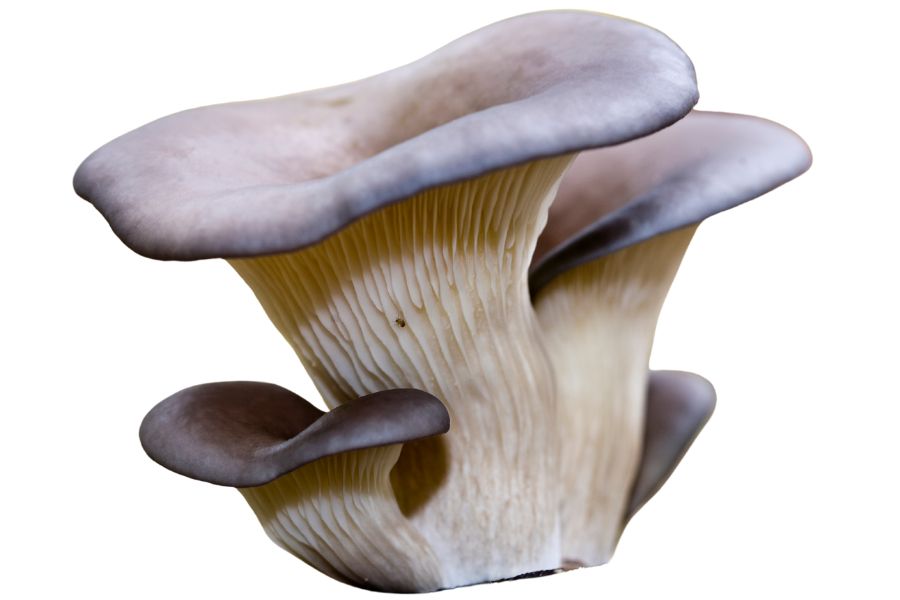If you’re in Wyoming during the right time of year, you can find wild plants that are not only edible but also highly valuable. Porcini mushrooms, for instance, are popular with chefs and hard to find in stores. The state also has edible berries and seeds that people gather for food and even sell at a small scale.
Some of these forageables are easy to miss because they blend into the landscape, like prairie onion or lamb’s quarters. Others grow in more obvious clusters, like elderberries or sunflower heads. What matters is knowing which plants are worth your time, because not all edible plants are equally useful.
There’s a lot more variety than most foragers expect, especially when they start looking beyond just berries or mushrooms. Different seasons bring different rewards, and some ingredients only last a few weeks.
If you learn to spot what’s in season and where it grows, you can end up with an impressive collection of wild foods.
What We Cover In This Article:
- What Makes Foreageables Valuable
- Foraging Mistakes That Cost You Big Bucks
- The Most Valuable Forageables in the State
- Where to Find Valuable Forageables in the State
- When to Forage for Maximum Value
- The extensive local experience and understanding of our team
- Input from multiple local foragers and foraging groups
- The accessibility of the various locations
- Safety and potential hazards when collecting
- Private and public locations
- A desire to include locations for both experienced foragers and those who are just starting out
Using these weights we think we’ve put together the best list out there for just about any forager to be successful!
A Quick Reminder
Before we get into the specifics about where and how to find these plants and mushrooms, we want to be clear that before ingesting any wild plant or mushroom, it should be identified with 100% certainty as edible by someone qualified and experienced in mushroom and plant identification, such as a professional mycologist or an expert forager. Misidentification can lead to serious illness or death.
All plants and mushrooms have the potential to cause severe adverse reactions in certain individuals, even death. If you are consuming wild foragables, it is crucial to cook them thoroughly and properly and only eat a small portion to test for personal tolerance. Some people may have allergies or sensitivities to specific mushrooms and plants, even if they are considered safe for others.
The information provided in this article is for general informational and educational purposes only. Foraging involves inherent risks.
What Makes Foreageables Valuable
Some wild plants, mushrooms, and natural ingredients can be surprisingly valuable. Whether you’re selling them or using them at home, their worth often comes down to a few key things:
The Scarcer the Plant, the Higher the Demand
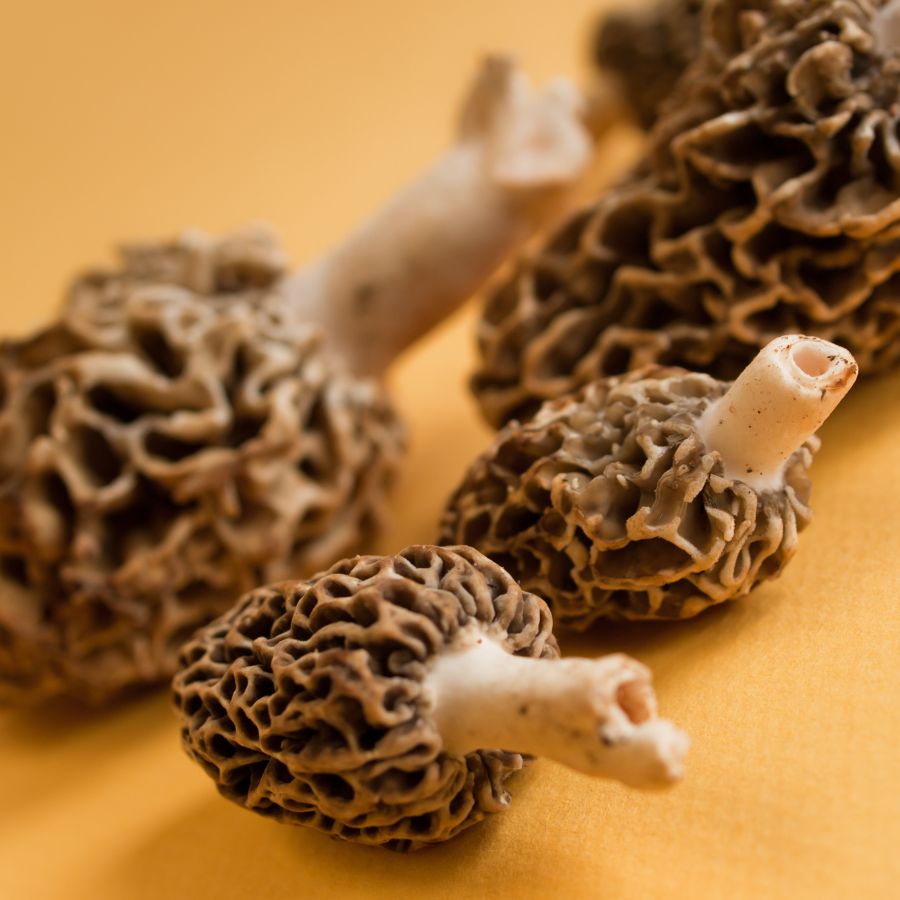
Some valuable forageables only show up for a short time each year, grow in hard-to-reach areas, or are very difficult to cultivate. That kind of rarity makes them harder to find and more expensive to buy.
Morels, truffles, and ramps are all good examples of this. They’re popular, but limited access and short growing seasons mean people are often willing to pay more.
A good seasonal foods guide can help you keep track of when high-value items appear.
High-End Dishes Boost the Value of Ingredients
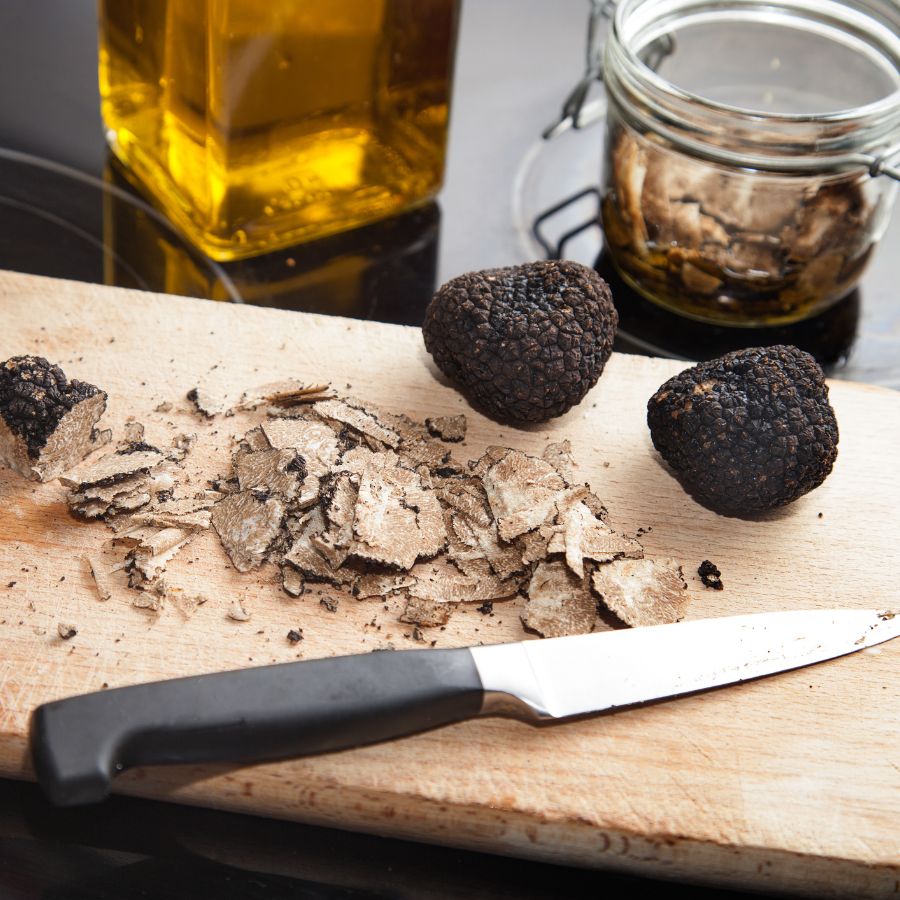
Wild ingredients that are hard to find in stores often catch the attention of chefs and home cooks. When something unique adds flavor or flair to a dish, it quickly becomes more valuable.
Truffles, wild leeks, and edible flowers are prized for how they taste and look on a plate. As more people try to include them in special meals, the demand—and the price—tends to rise.
You’ll find many of these among easy-to-identify wild mushrooms or herbs featured in fine dining.
Medicinal and Practical Uses Drive Forageable Prices Up
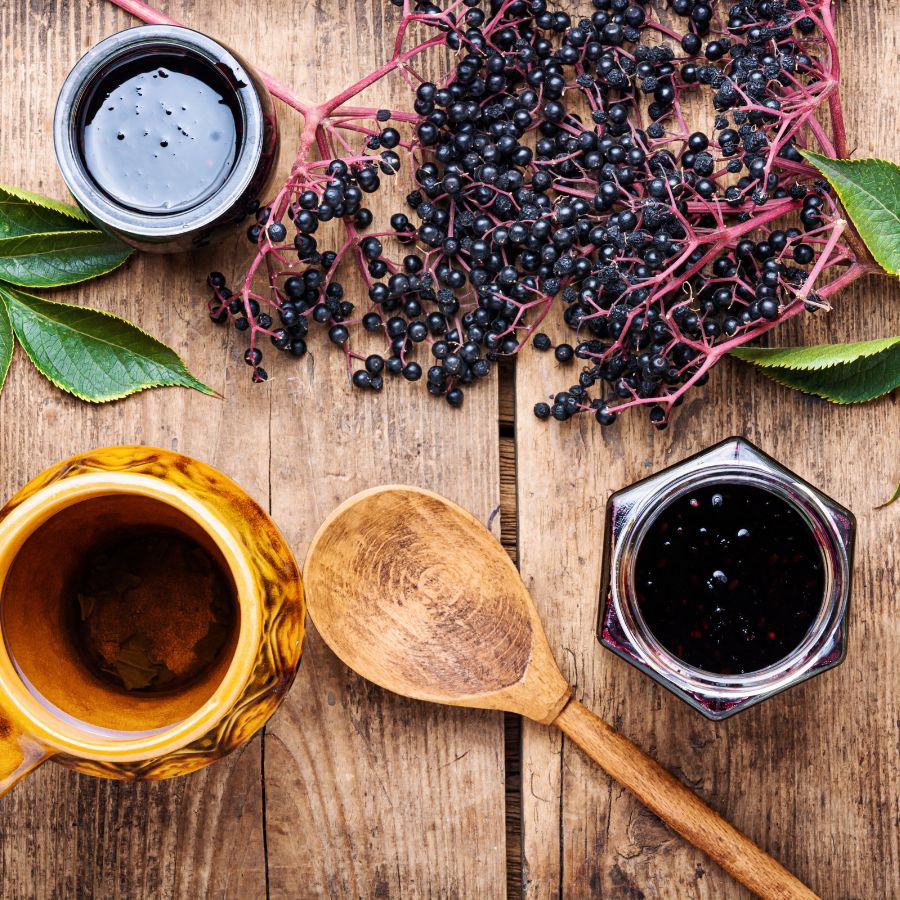
Plants like ginseng, goldenseal, and elderberries are often used in teas, tinctures, and home remedies. Their value comes from how they support wellness and are used repeatedly over time.
These plants are not just ingredients for cooking. Because people turn to them for ongoing use, the demand stays steady and the price stays high.
The More Work It Takes to Harvest, the More It’s Worth
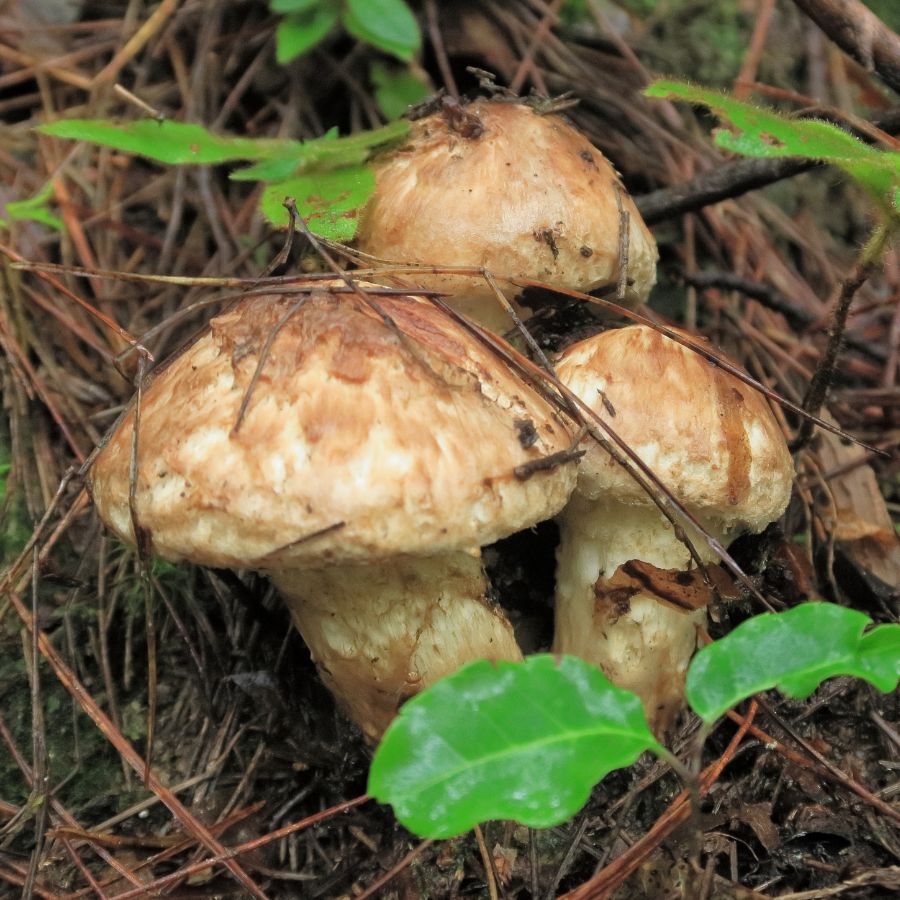
Forageables that are hard to reach or tricky to harvest often end up being more valuable. Some grow in dense forests, need careful digging, or have to be cleaned and prepared before use.
Matsutake mushrooms are a good example, because they grow in specific forest conditions and are hard to spot under layers of leaf litter. Wild ginger and black walnuts, meanwhile, both require extra steps for cleaning and preparation before they can be used or sold.
All of that takes time, effort, and experience. When something takes real work to gather safely, buyers are usually willing to pay more for it.
Foods That Keep Well Are More Valuable to Buyers
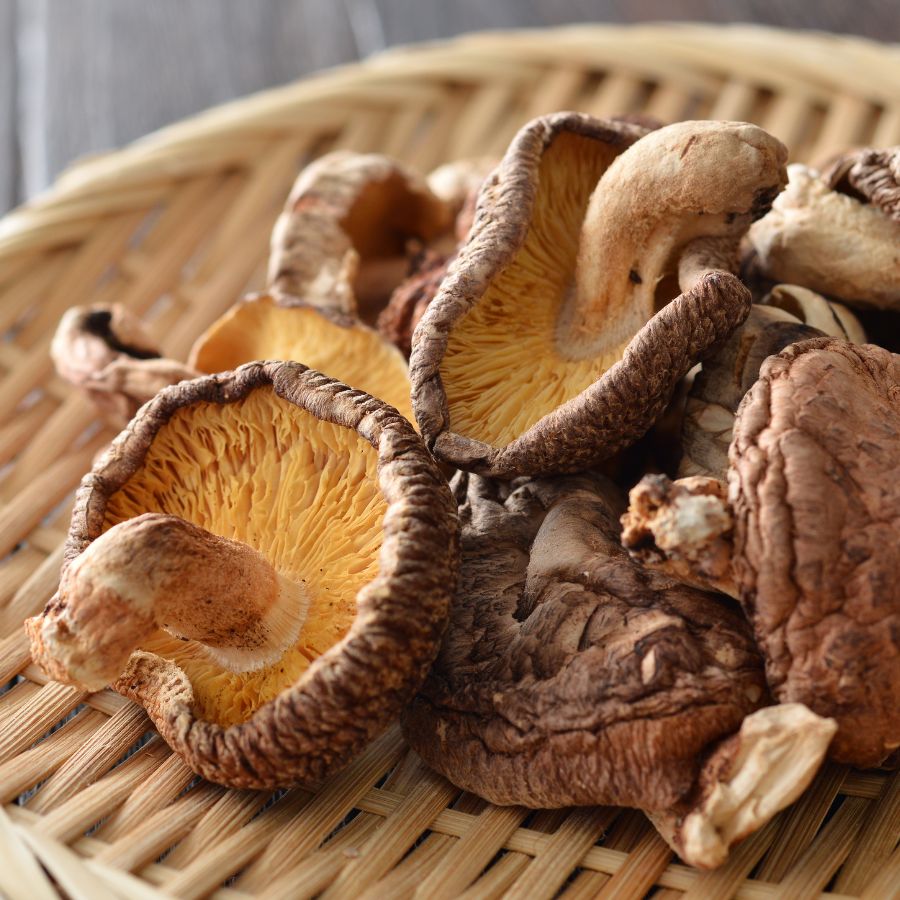
Some forageables, like dried morels or elderberries, can be stored for months without losing their value. These longer-lasting items are easier to sell and often bring in more money over time.
Others, like wild greens or edible flowers, have a short shelf life and need to be used quickly. Many easy-to-identify wild greens and herbs are best when fresh, but can be dried or preserved to extend their usefulness.
A Quick Reminder
Before we get into the specifics about where and how to find these mushrooms, we want to be clear that before ingesting any wild mushroom, it should be identified with 100% certainty as edible by someone qualified and experienced in mushroom identification, such as a professional mycologist or an expert forager. Misidentification of mushrooms can lead to serious illness or death.
All mushrooms have the potential to cause severe adverse reactions in certain individuals, even death. If you are consuming mushrooms, it is crucial to cook them thoroughly and properly and only eat a small portion to test for personal tolerance. Some people may have allergies or sensitivities to specific mushrooms, even if they are considered safe for others.
The information provided in this article is for general informational and educational purposes only. Foraging for wild mushrooms involves inherent risks.
Foraging Mistakes That Cost You Big Bucks
When you’re foraging for high-value plants, mushrooms, or other wild ingredients, every decision matters. Whether you’re selling at a farmers market or stocking your own pantry, simple mistakes can make your harvest less valuable or even completely worthless.
Harvesting at the Wrong Time
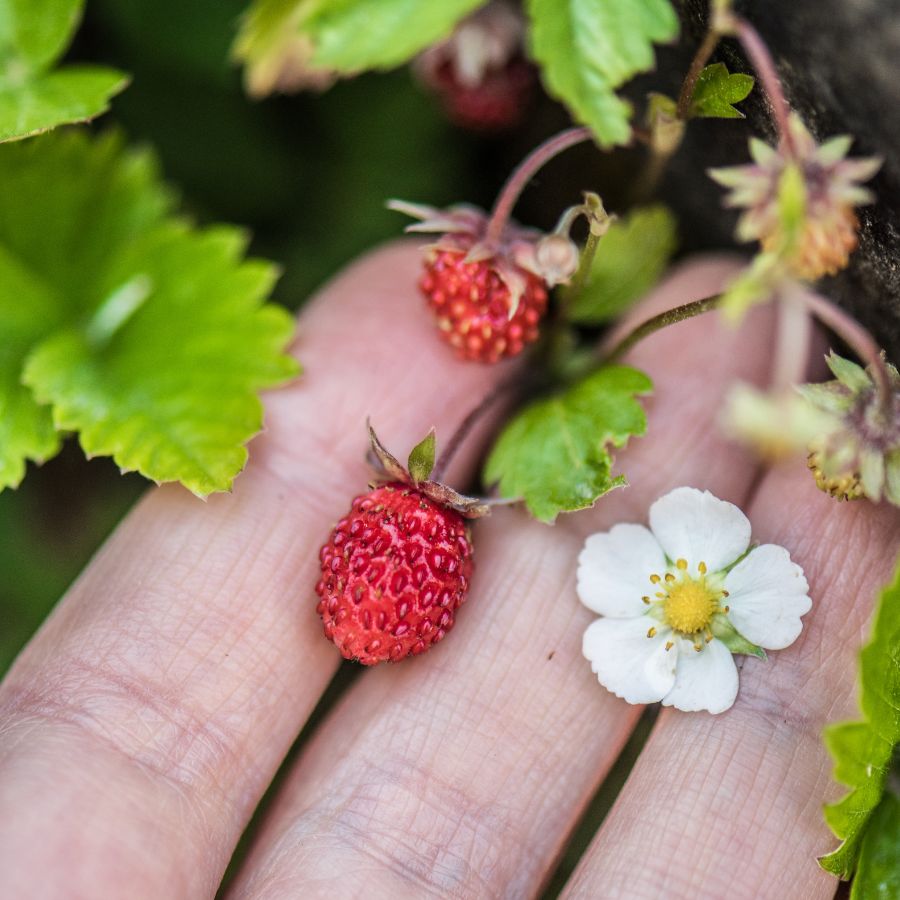
Harvesting at the wrong time can turn a valuable find into something no one wants. Plants and mushrooms have a short window when they’re at their best, and missing it means losing quality.
Morels, for example, shrink and dry out quickly once they mature, which lowers their weight and price. Overripe berries bruise in the basket and spoil fast, making them hard to store or sell.
Improper Handling After Harvest
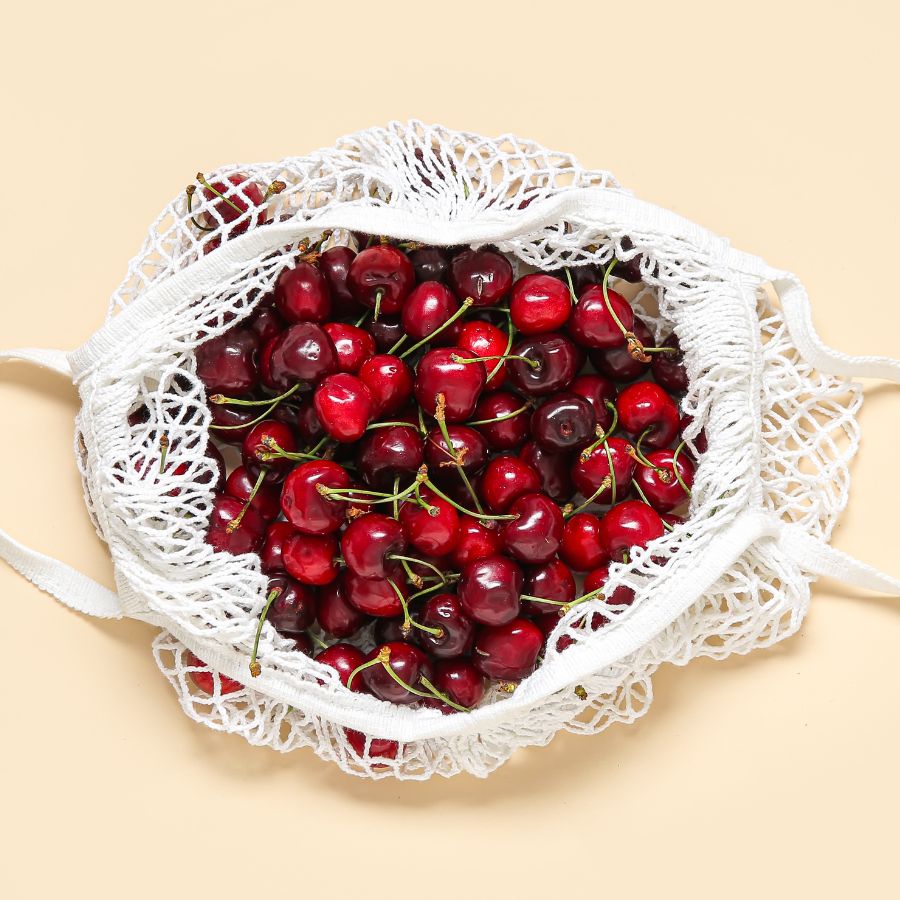
Rough handling can ruin even the most valuable forageables. Crushed mushrooms, wilted greens, and dirty roots lose both their appeal and their price.
Use baskets or mesh bags to keep things from getting smashed and let air circulate. Keeping everything cool and clean helps your harvest stay fresh and look better for longer.
This is especially important for delicate items like wild roots and tubers that need to stay clean and intact.
Skipping Processing Steps
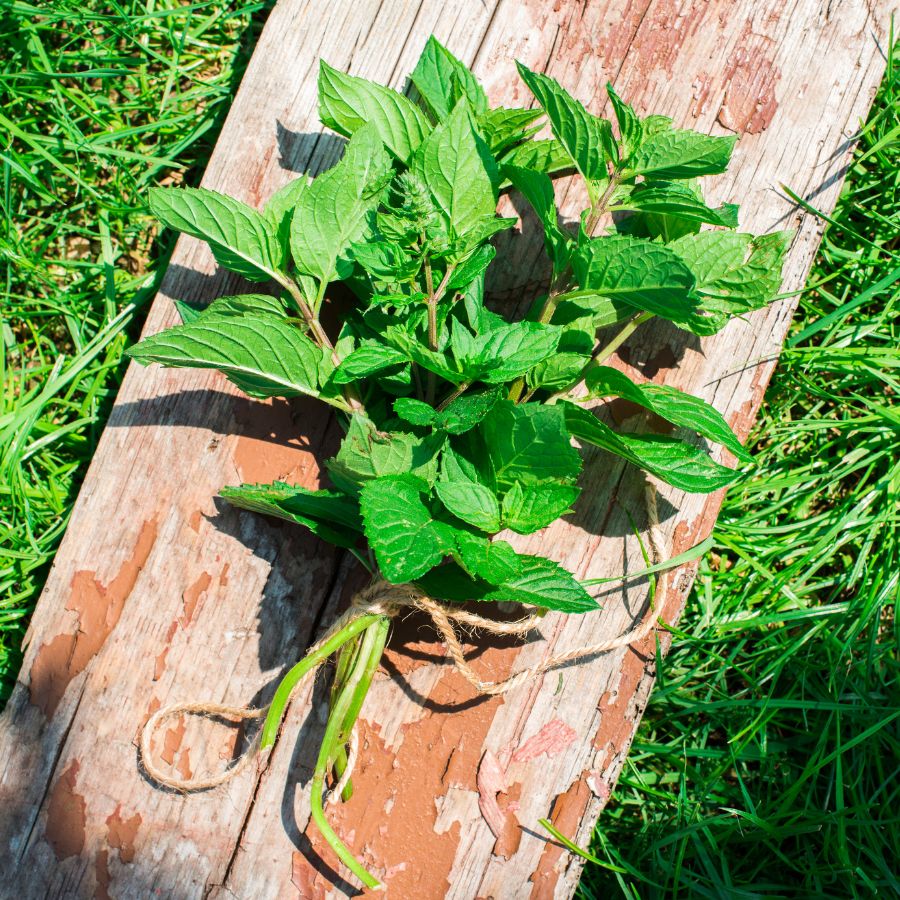
Skipping basic processing steps can cost you money. A raw harvest may look messy, spoil faster, or be harder to use.
For example, chaga is much more valuable when dried and cut properly. Herbs like wild mint or nettle often sell better when bundled neatly or partially dried. If you skip these steps, you may end up with something that looks unappealing or spoils quickly.
Collecting from the Wrong Area
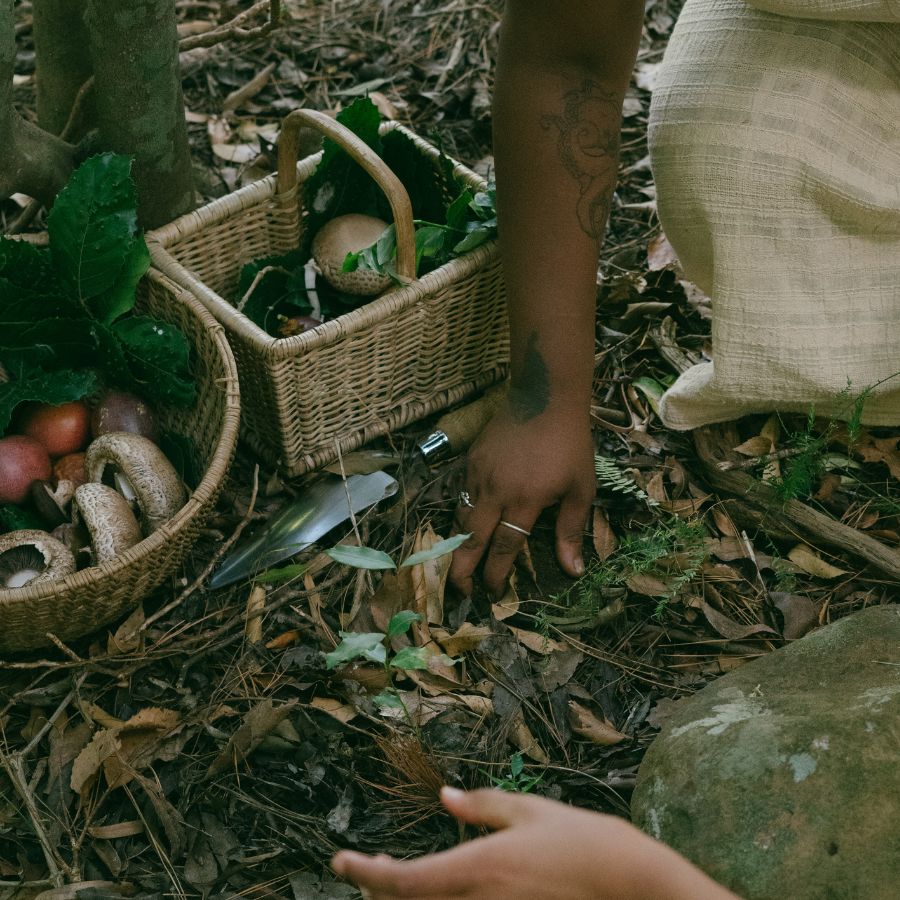
Harvesting in the wrong place can ruin a good find. Plants and mushrooms pulled from roadsides or polluted ground may be unsafe, no matter how fresh they look.
Buyers want to know their food comes from clean, responsible sources. If a spot is known for overharvesting or damage, it can make the whole batch less appealing.
These suburbia foraging tips can help you find overlooked spots that are surprisingly safe and productive.
Not Knowing the Market
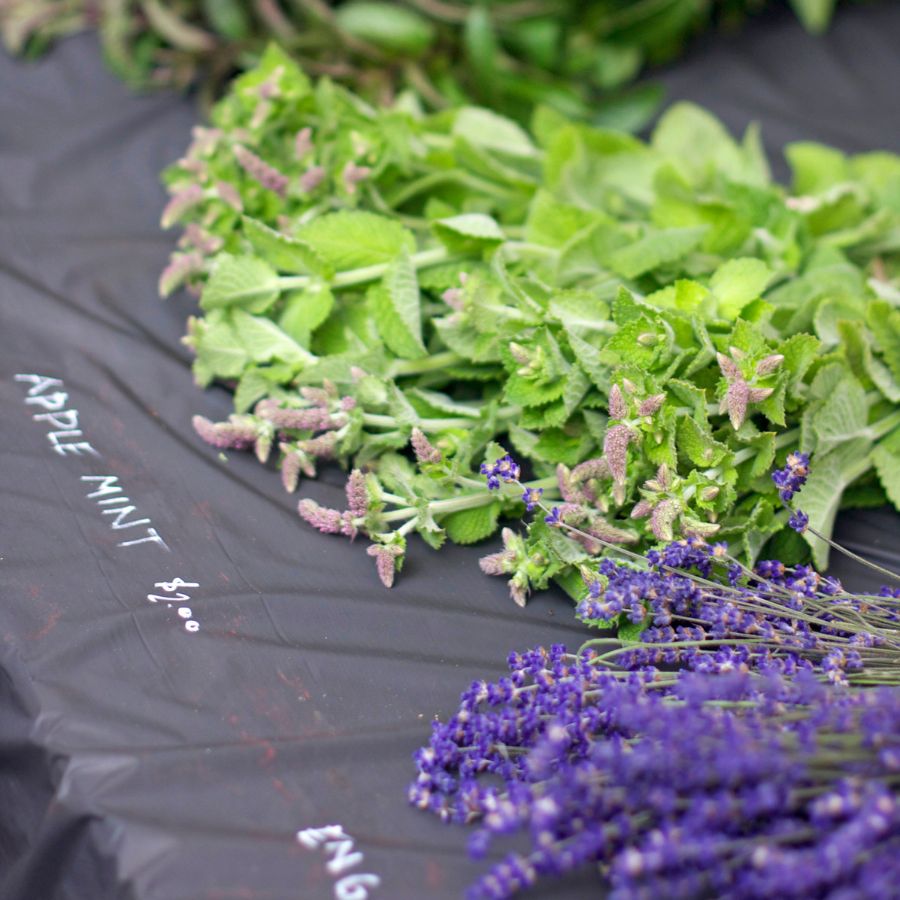
A rare plant isn’t valuable if nobody wants to buy it. If you gather in-demand species like wild ramps or black trumpets, you’re more likely to make a profit. Pay attention to what chefs, herbalists, or vendors are actually looking for.
Foraging with no plan leads to wasted effort and unsold stock. Keeping up with demand helps you bring home a profit instead of a pile of leftovers.
You can also brush up on foraging for survival strategies to identify the most versatile and useful wild foods.
Before you head out
Before embarking on any foraging activities, it is essential to understand and follow local laws and guidelines. Always confirm that you have permission to access any land and obtain permission from landowners if you are foraging on private property. Trespassing or foraging without permission is illegal and disrespectful.
For public lands, familiarize yourself with the foraging regulations, as some areas may restrict or prohibit the collection of mushrooms or other wild foods. These regulations and laws are frequently changing so always verify them before heading out to hunt. What we have listed below may be out of date and inaccurate as a result.
The Most Valuable Forageables in the State
Some of the most sought-after wild plants and fungi here can be surprisingly valuable. Whether you’re foraging for profit or personal use, these are the ones worth paying attention to:
Chokecherry (Prunus virginiana)

The fruit of chokecherry, also called bitter-berry or Virginia bird cherry, grows in dense clusters and ripens to a deep purple-black color. Its puckering taste is balanced out when cooked into jellies, syrups, or wine.
You can eat the skin and pulp, but the large pit inside contains toxic compounds and should never be consumed raw. Even the leaves and stems can be harmful if ingested.
Chokecherry has a tart, astringent flavor when fresh, but that changes entirely once heat and sugar are added. The texture softens nicely in jams and fruit leather.
The plant’s value comes from both its culinary uses and the fact that it grows abundantly in the wild. While not particularly high-priced, the fruits can still bring a decent return when sold in processed form.
Elderberry (Sambucus nigra)
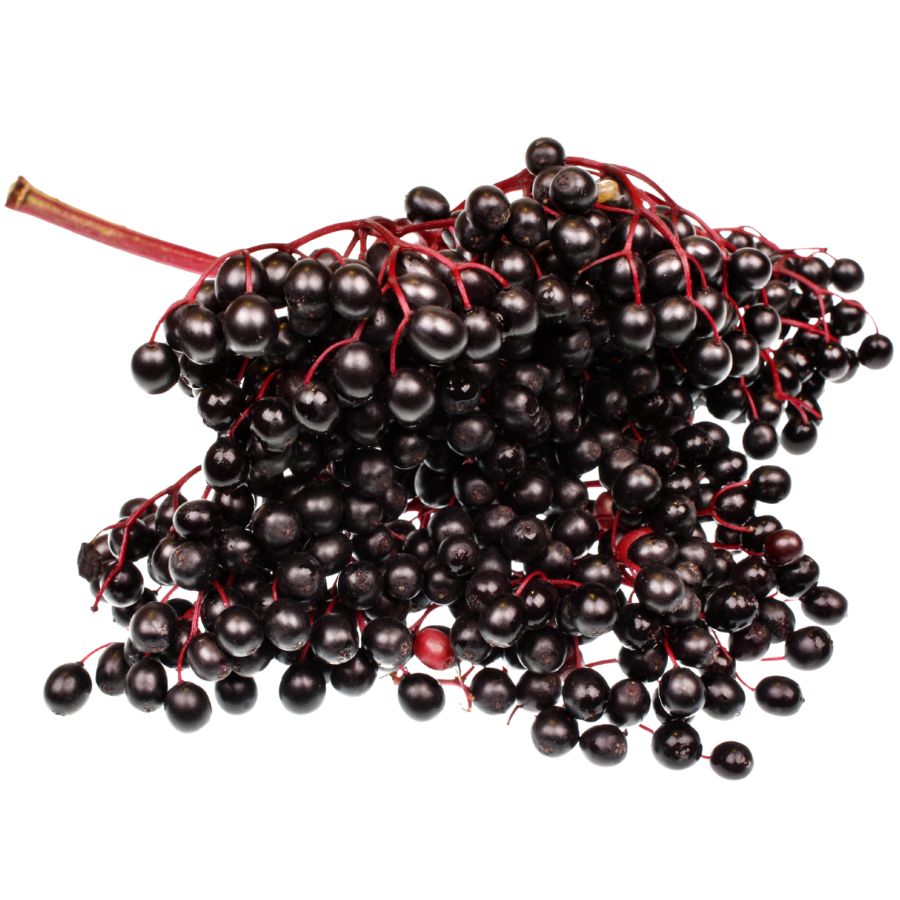
For centuries, elderberries have been gathered not just for food, but for making home remedies prized across the Southwest. Also called Mexican elder and tapiro, elderberry grows as a sprawling bush or small tree with clusters of tiny white flowers that turn into dusty blue-black berries.
There are toxic lookalikes you need to watch for, especially red elderberry, which has round clusters of bright red fruit. Elderberries grow in flatter, broader clusters and have a softer, more powdery appearance when ripe.
The berries have a deep, earthy flavor with a tart edge, and are usually cooked into jams, syrups, and baked goods to bring out their richness.
Make sure to avoid eating the raw berries, seeds, bark, or leaves because they can cause nausea unless they are properly cooked.
This plant stays valuable because the berries are used heavily in teas, tinctures, and syrups that people rely on for wellness, driving steady demand. Elderberries can also be dried and stored for months, making it even more profitable compared to foods that spoil quickly.
Plains Pricklypear Cactus (Opuntia polyacantha)
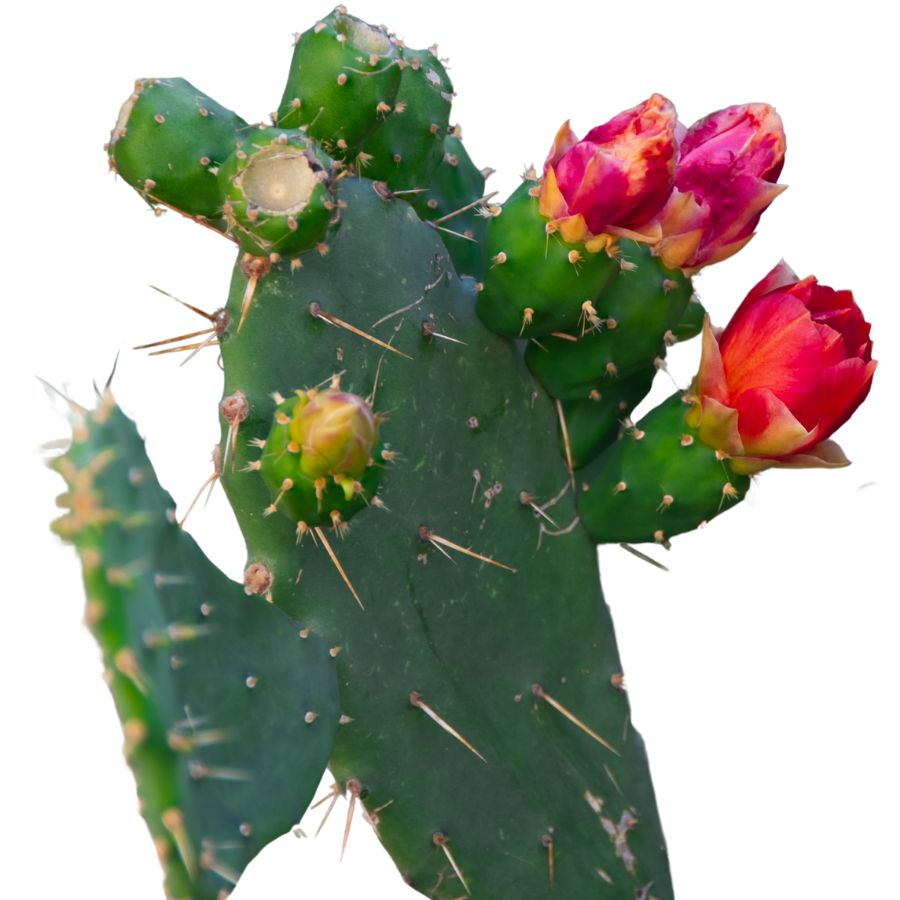
Plains pricklypear cactus has flat green pads that grow in clumps, each one lined with long spines and short barbed hairs that irritate the skin. The pads and fruit are edible if handled and cleaned correctly.
The pads are best sliced and grilled or sautéed, giving them a slightly sour flavor with a texture like cooked okra. The fruit can be eaten fresh or processed into juice, candy, or jelly.
It’s important not to confuse it with non-edible species that grow in similar environments, especially those without fleshy fruit or those with dense clusters of long, dark spines. Always use gloves and tongs to avoid getting glochids in your skin.
Harvested pads, or nopales, are sold fresh or jarred in brine, and the fruit is often sold peeled at local markets. While not extremely expensive, cleaned pricklypear products are in steady demand and can be a valuable addition to a forager’s haul.
Milkweed (Asclepias syriaca)
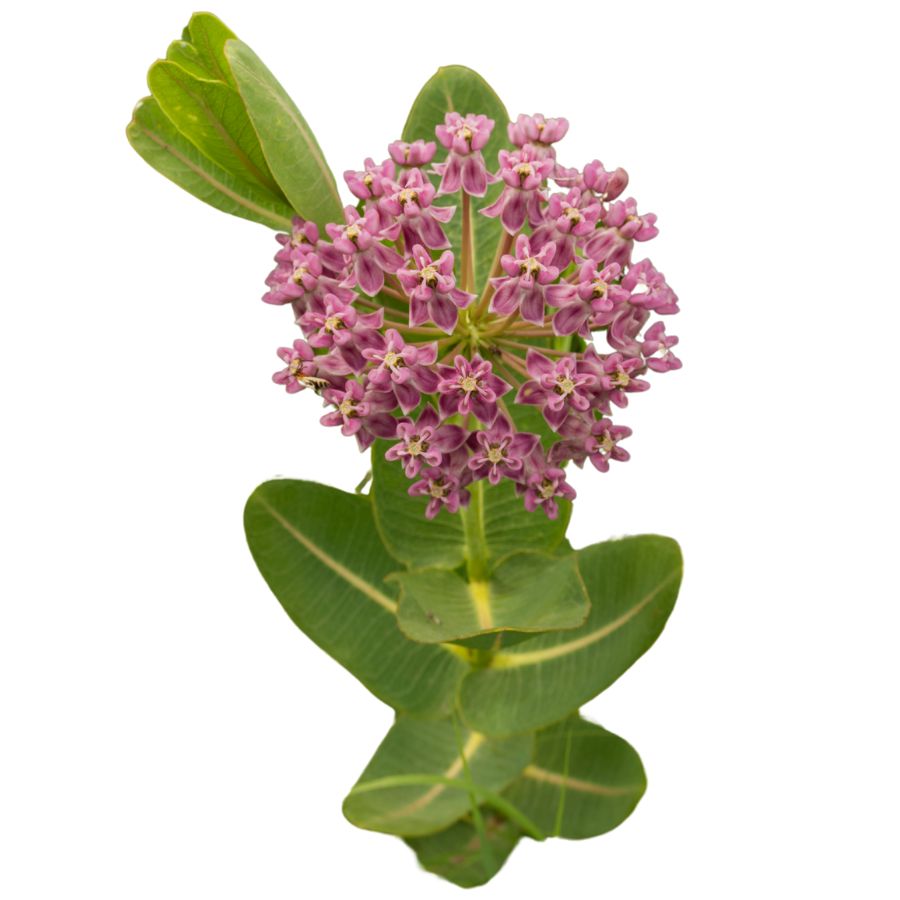
You’ll find milkweed growing in open fields, where it produces thick stems, wide green leaves, and heavy flower clusters. The unopened buds and tender pods are the most popular edible parts, though only after boiling them well.
It’s often confused with dogbane, which is poisonous and doesn’t produce the same sticky white sap when snapped. When cooked correctly, the pods become tender and taste a little like asparagus with a softer bite.
People usually prepare milkweed in soups, boiled side dishes, or even fried after parboiling to remove toxins. Boiling the parts in two or three rounds of water is the safest way to make them edible.
This plant isn’t widely sold commercially, but in local foraging communities, it’s a valued wild vegetable. If you’re careful with your identification and preparation, milkweed can be a surprisingly versatile wild food.
Colorado Pinyon (Pinus edulis)
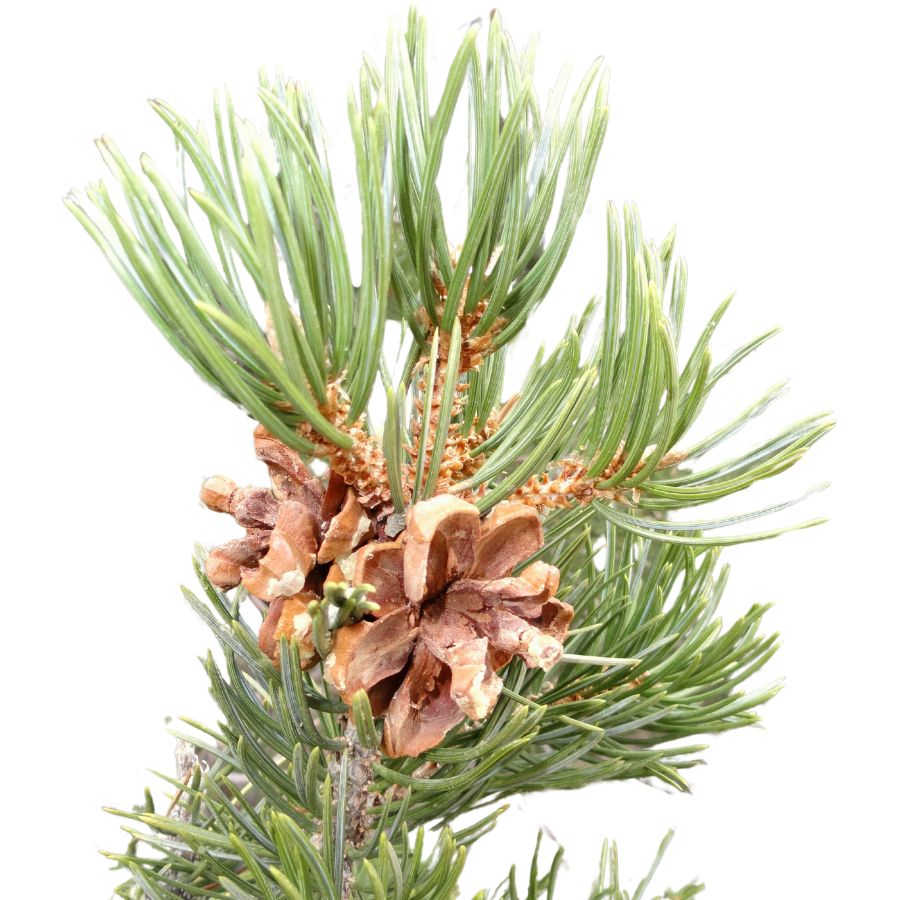
Colorado pinyon, often just called pinyon pine or nut pine, produces edible seeds that are small but rich and flavorful. The seeds are hidden inside tightly packed cones and have a soft, oily texture with a slightly sweet, buttery taste.
You can eat them raw or roast them for a deeper flavor, and they’re often ground into paste or added to baked goods. What makes them valuable is their limited yield and the effort required to harvest and shell each nut, which can raise their price to over $30 per pound in some markets.
The seeds are the only edible part—needles and resin shouldn’t be consumed. Some people confuse Colorado pinyon with singleleaf pinyon or other pine species whose nuts are bitter or not as palatable, but the difference is clear once you taste them.
The tree itself is short and bushy, with pairs of stiff, dark green needles about an inch long. Its cones are squat and round, and they open slowly, which makes harvesting a bit more involved than with other pines.
Lamb’s Quarters (Chenopodium album)
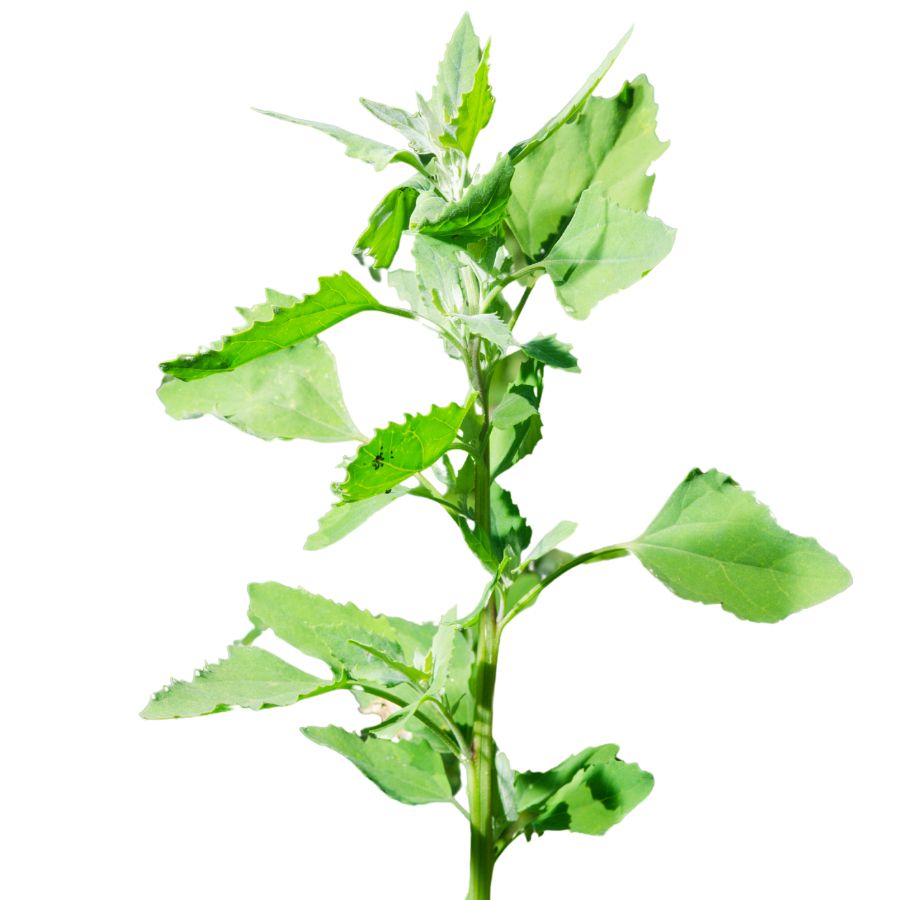
Lamb’s quarters, or wild spinach, is a common backyard plant with diamond-shaped leaves that often look like they’ve been dusted with flour. That powdery texture is one of the simplest ways to tell it apart from toxic plants that have smoother or glossier leaves.
The younger leaves have a mild taste and soft texture, making them popular in stir-fries and pestos. Most people harvest the leaves and tender tops, but the tiny seeds are also usable if properly prepared.
Some plants that resemble lamb’s quarters, like young pokeweed, are not safe to eat and have very different stem coloration. Lamb’s quarters typically has green to purplish stems and no berries.
Because of how nutritious and versatile it is, the plant has been gathered for centuries across many cultures. It’s not a high-ticket item, but it does show up in specialty food markets and foraged meal boxes.
Oyster Mushroom (Pleurotus ostreatus)
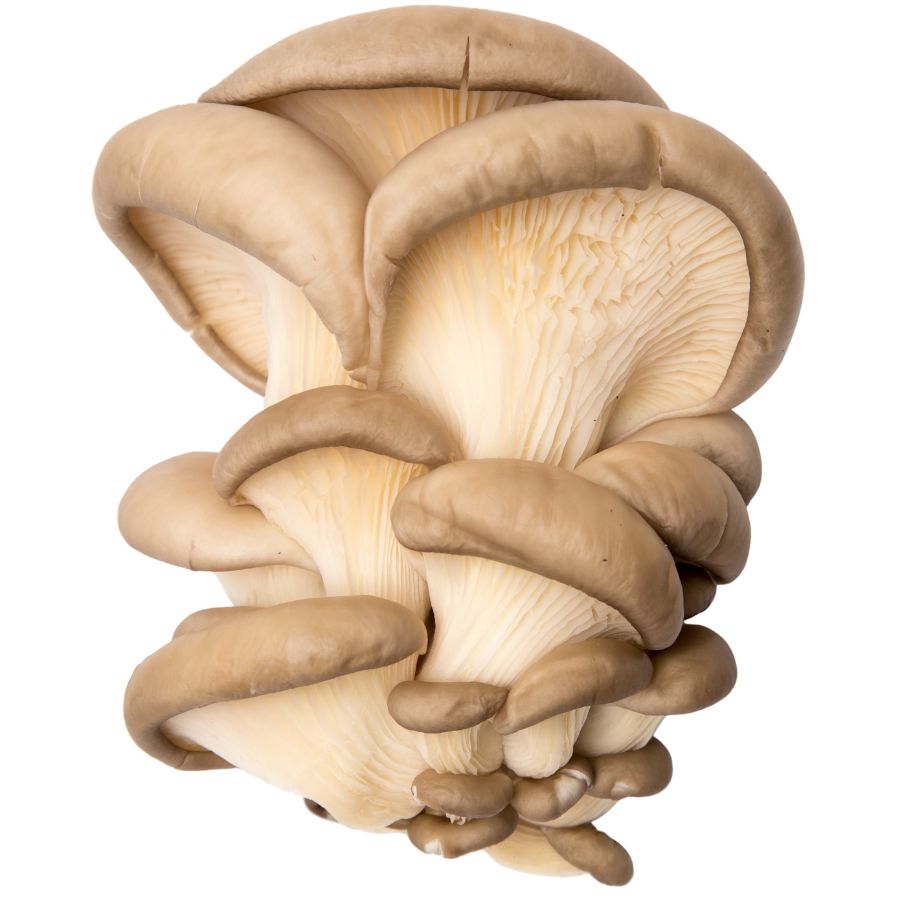
Look for oyster mushrooms growing directly out of logs or stumps, forming overlapping clusters of pale, fluted caps with white gills that stretch downward. The cap shape is typically rounded like a fan or an oyster shell, with a smooth, soft texture.
These mushrooms are completely edible except for any tough or fibrous sections near the base. When cooked, they have a mild, savory flavor and absorb sauces well, making them ideal for stir-fries, pasta, and soups.
They can be confused with toxic lookalikes like the false oyster, which has darker gills and a tougher consistency, or the jack-o’-lantern, which is bright orange and grows from the ground. Checking the substrate—wood only—is one of the easiest ways to avoid mistakes.
Fresh oyster mushrooms usually sell for $10–$20 per pound fresh depending on variety and quality. Their value comes not only from taste and versatility but also from a short shelf life that keeps them in demand from local growers.
Porcini (Boletus edulis)
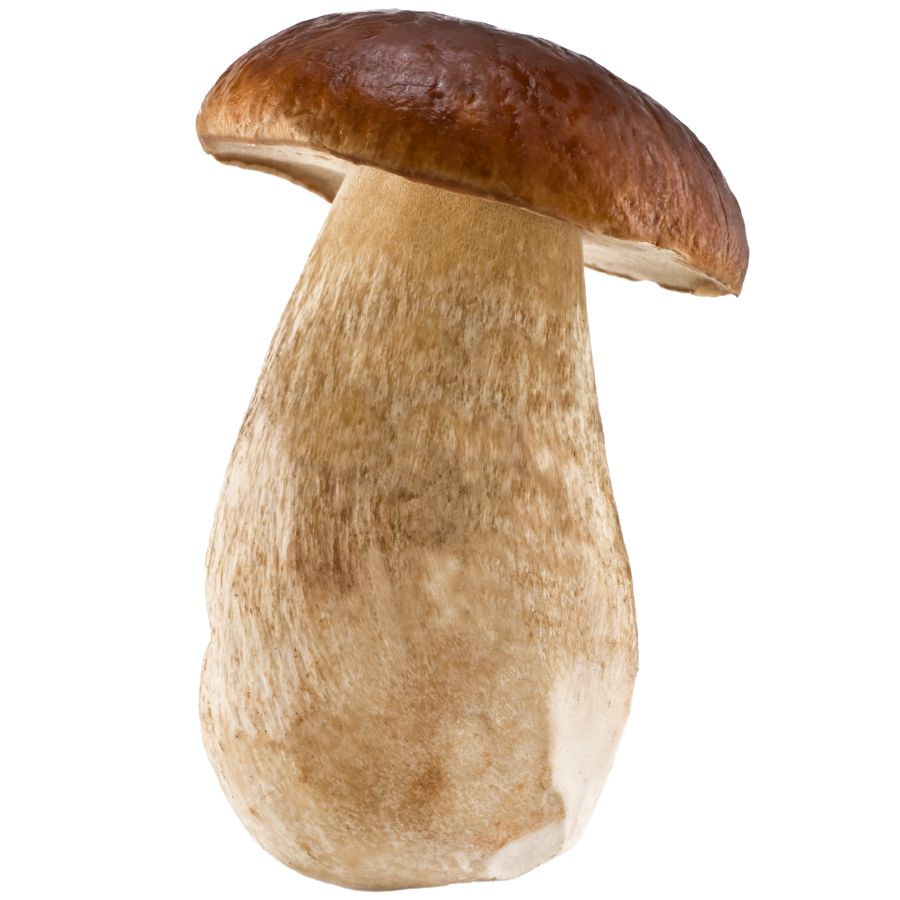
Porcini mushrooms, also called king boletes and penny buns, have thick, creamy-colored stalks and broad brown caps that feel slightly sticky when damp. The spongy layer under the cap is made of tiny pores instead of gills, which helps set them apart from inedible lookalikes like the bitter bolete.
The flavor is rich, nutty, and meaty, making porcini a favorite for sautés, risottos, soups, and pasta dishes. Their firm texture holds up well when dried, and dried porcini are often ground into powders or rehydrated to add deep flavor to broths and sauces.
You can safely eat the cap and the upper part of the stalk, but it is a good idea to trim off any woody or tough lower portions before cooking. A quick check for tiny holes or tunneling is important too, because insects are drawn to porcini and can burrow inside without leaving much visible damage.
Wild porcini are highly valued because they are difficult to cultivate commercially, and foragers often find them in remote forest areas, which adds to their scarcity. High-quality dried porcini can sell for $30 to $60 per pound, with fresh specimens commanding even higher prices when they appear on fine dining menus.
Curly Dock (Rumex crispus)
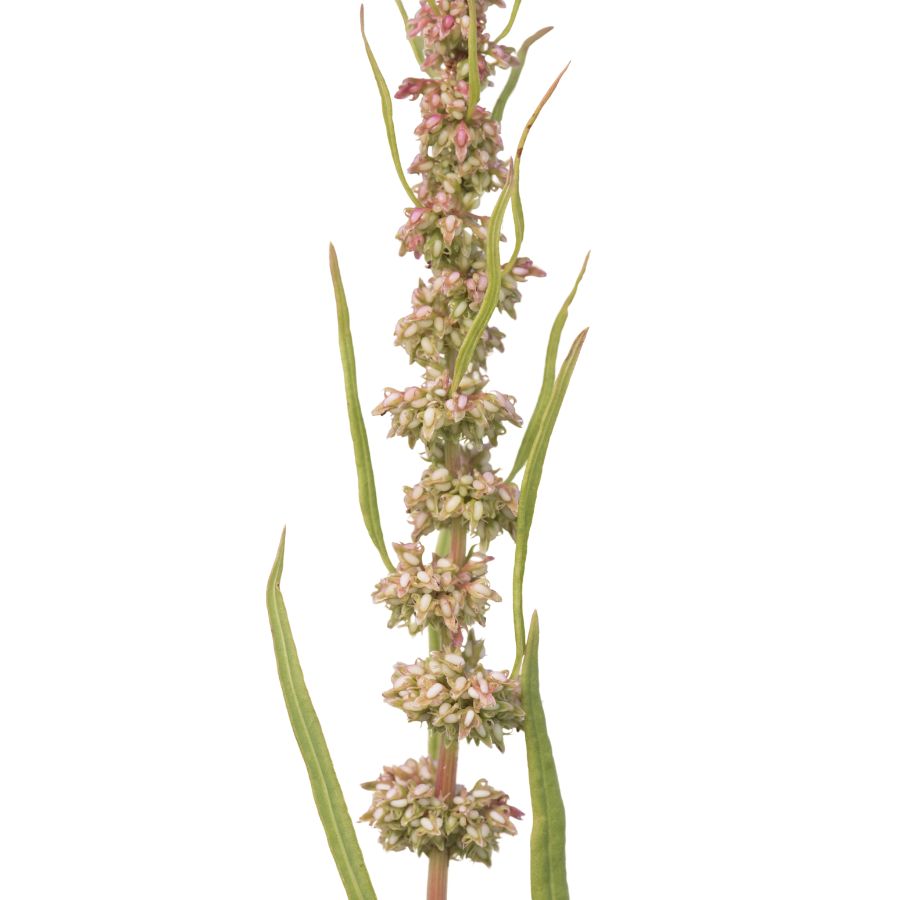
Curly dock grows in a tall, upright cluster with narrow, wavy-edged leaves and a deep taproot. You’ll often see the older seed stalks turn a rusty brown and remain standing even after the leaves die back.
The leaves are edible when young, with a tart, lemony flavor and a slightly chewy texture once cooked. Most people boil them in a few changes of water or sauté them like spinach.
You can also harvest the seeds, which look like small, papery brown hulls along the dried stalks. They’re edible too, but gritty and often ground into flour to mix with other grains.
Some dock species aren’t as palatable or safe, especially ones with broader leaves or harsh, acrid sap. Curly dock is generally safe in moderation, but it does contain oxalates, so it’s not a good idea to eat it in large quantities every day.
Stinging Nettle (Urtica dioica)

Stinging nettle, also called burn nettle or common nettle, is a leafy green covered in tiny needle-like hairs that deliver a sting. These hairs can irritate your skin, but cooking the plant completely removes that problem.
Only the top few inches of the plant are harvested for food, usually while the stems are still tender. After boiling or steaming, the leaves taste mildly herbal and have a texture similar to cooked kale.
It’s easy to confuse stinging nettle with lookalikes like wood nettle or false nettle, but the key difference is how aggressively stinging nettle reacts when touched. If you brush against it and feel a sharp tingling burn, it’s the real thing.
Fresh nettles are sold at some farmers markets and herb shops, though their value mostly comes from their nutritional punch and culinary versatility. They’re often used in soups, pestos, and green purées where other leafy greens might wilt too quickly.
Cow Parsnip (Heracleum maximum)

You’ll recognize cow parsnip, also called Indian rhubarb or wild celery, by its tall hollow stems and wide leaves that can grow over a foot across. The flower heads form flat clusters of small white blooms that attract attention in the wild.
The edible parts are the young shoots and flower buds, but only after cooking—raw juice from the plant can cause a severe rash when exposed to sunlight. Peeled stalks have a texture like cooked zucchini and a taste somewhere between parsley and celery.
People sometimes mistake it for giant hogweed, which has a thicker, blotchy stem and more deeply cut leaves. Cow parsnip stems are solid green with fine white hairs, and they don’t have the same toxic compounds at dangerous levels.
Foragers in Alaska and parts of the Pacific Northwest gather it for traditional dishes, and local markets occasionally sell it fresh or pickled. It’s not a high-dollar crop, but its value lies in tradition, flavor, and scarcity in commercial channels.
Jerusalem Artichoke (Helianthus tuberosus)
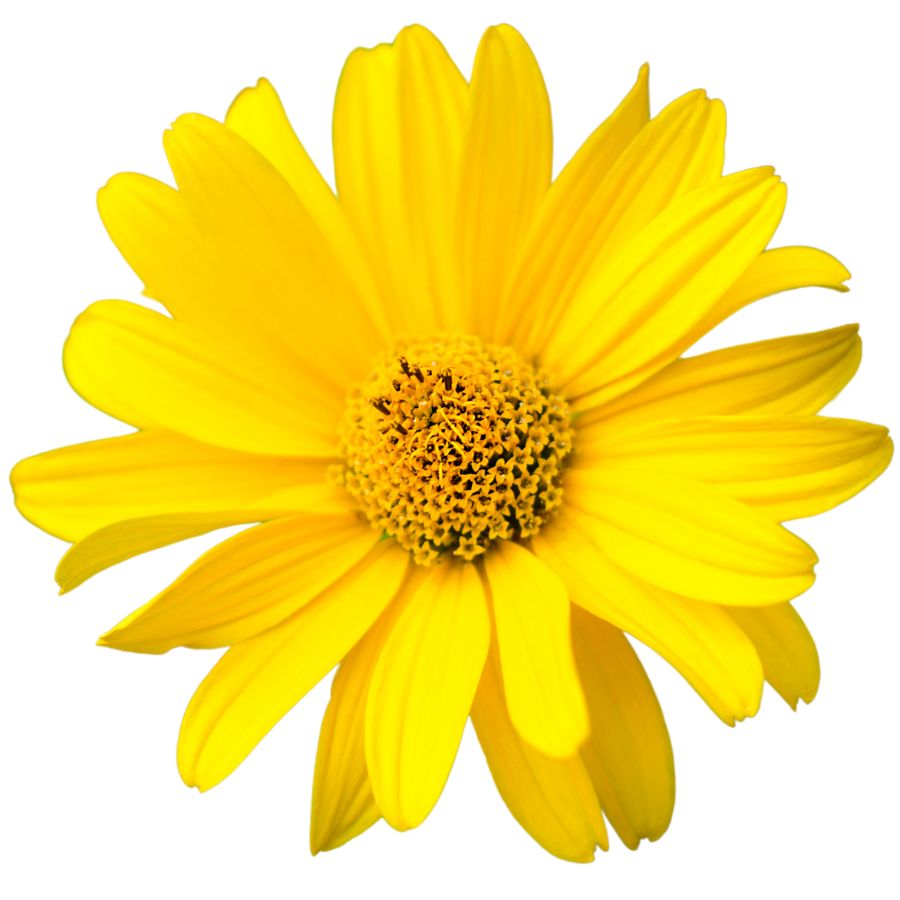
The Jerusalem artichoke is a sunflower relative that grows tall with bright yellow blooms and knobby, potato-like tubers underground. Its underground part is what you eat, while the stems, leaves, and flowers are best left alone.
What makes the tubers interesting is their crisp texture when raw and a nutty, slightly sweet flavor when cooked. They’re often roasted, pureed into soups, or sliced thin for chips.
Some wild sunflowers can look similar, but they don’t form the same type of tubers. If you’re not digging up a bumpy, tan root shaped like ginger, you’re not looking at the right plant.
People value Jerusalem artichokes for their culinary versatility and as a low-starch alternative to potatoes. They sell for a decent price at specialty grocers and farmers markets, especially when freshly dug.
Morel Mushroom (Morchella spp.)
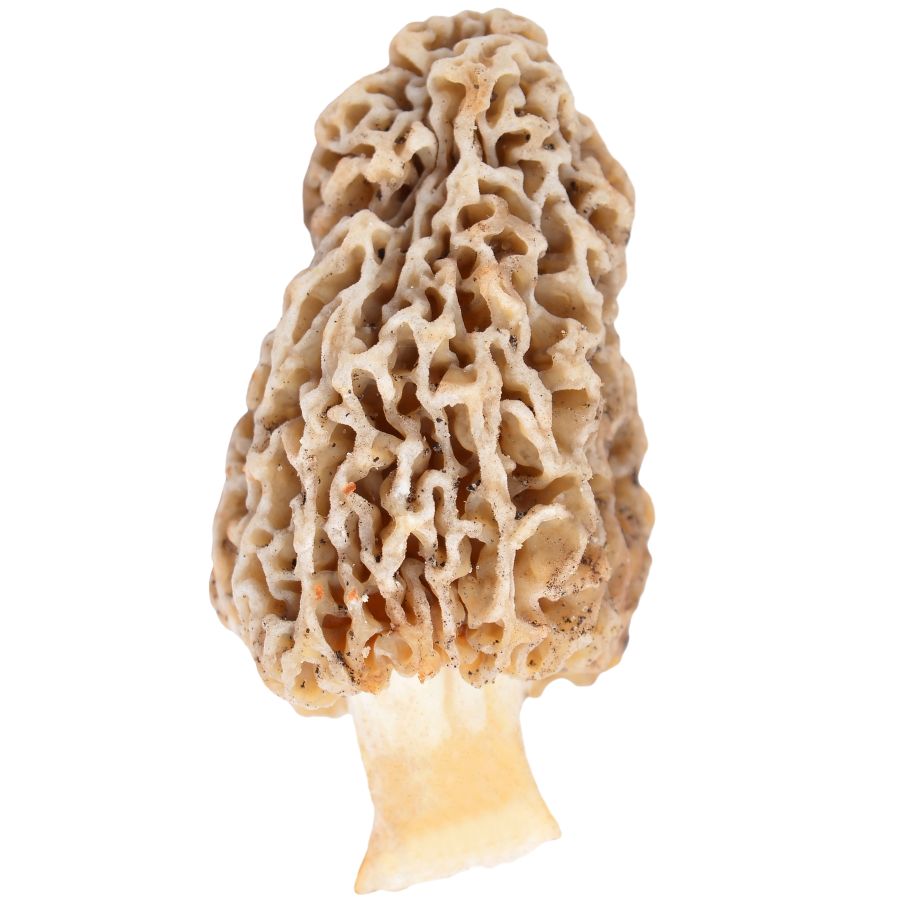
Morel mushrooms have a honeycomb-like surface with deep pits and ridges. The cap is fully attached to the stem, which helps set them apart from dangerous lookalikes like false morels that often have wrinkled, lobed caps and loose or cottony interiors.
The rich, nutty flavor and slightly chewy texture make morels a favorite in high-end kitchens. Many people sauté them in butter, stuff them, or dry them for later use because they hold their flavor extremely well.
Always cook morels thoroughly because raw ones can cause stomach upset, even when they look perfectly normal.
Morels are highly prized by chefs and home cooks, sometimes selling for over $50 per pound fresh and even more when dried.
Part of what makes morels so valuable is how hard they are to cultivate and find. They often grow in specific, unpredictable places, and their short harvesting window drives up both the demand and the price.
Serviceberry (Amelanchier alnifolia)
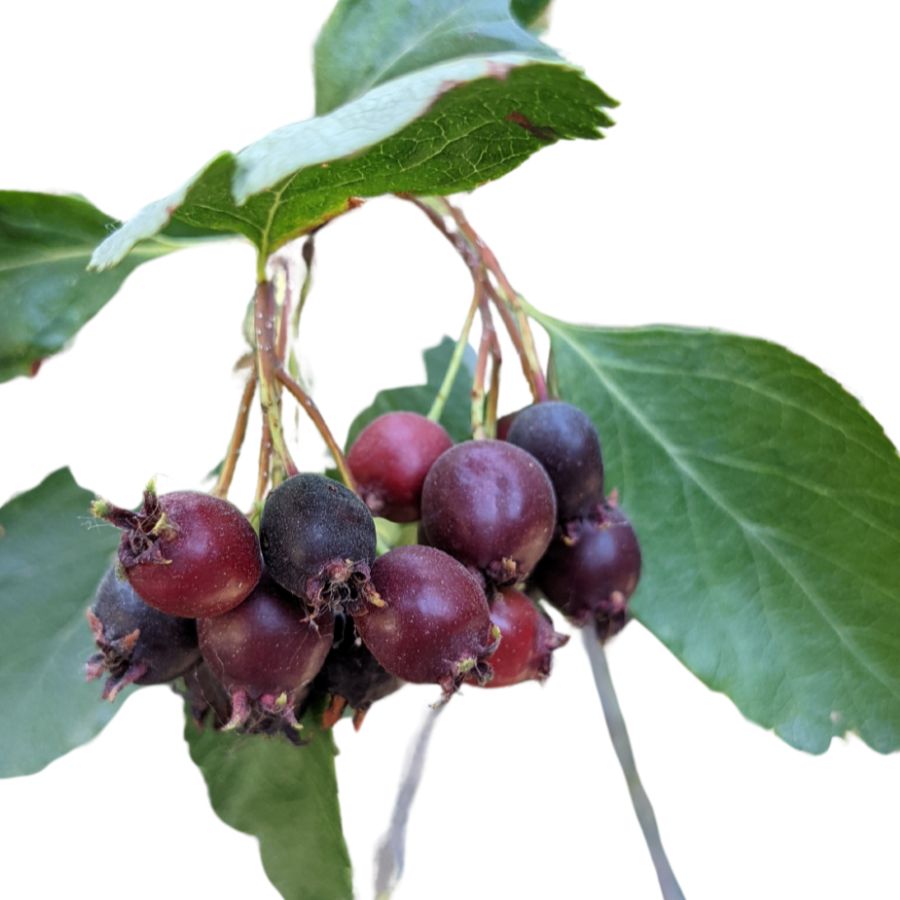
You can spot serviceberry shrubs by their smooth gray bark, clusters of white flowers, and dark blue to purple berries. To avoid confusing them with less safe berries like chokecherries, look for the five-pointed crown at the end of each ripe serviceberry.
These berries taste sweet and slightly nutty, almost like a richer version of a blueberry. Most people dry them, bake them into pastries, or cook them down into rich preserves.
The edible part is the ripe berry, while eating too many seeds raw could cause mild stomach issues because of their natural compounds. When dried or frozen, the berries keep their flavor and quality, making them more valuable for long-term storage and resale.
Serviceberries are a favorite among foragers and chefs because they are packed with flavor and work well in a wide range of recipes. Many buyers are willing to pay well for clean, well-prepared berries that hold up beautifully in baking and cooking.
Black Huckleberry (Vaccinium membranaceum)
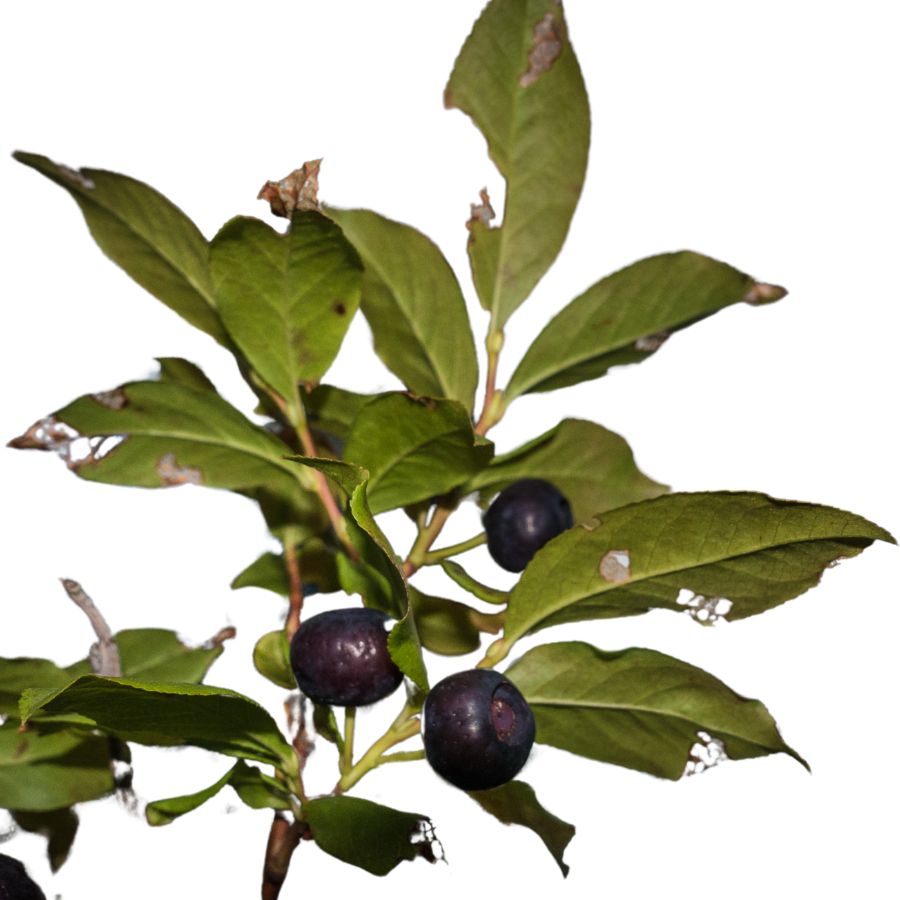
Black huckleberries grow on shrubs with oval, finely toothed leaves and produce dark purple to nearly black berries. The berries are round, with a slightly glossy skin and a small crown at the end.
You can eat them raw, but they’re also great cooked into jams, syrups, or pie fillings because they hold their shape and have a firm texture. The flavor is sweet with a deep berry richness, often described as more intense than blueberries.
A common lookalike is the bilberry, which has similar foliage but tends to grow in smaller patches and has a more watery, less sweet fruit. Avoid berries from unrelated shrubs with similar leaves but no crown on the fruit, especially if the juice is white or the stem milky.
People forage black huckleberries for both personal use and commercial sale, with prices reaching over $20 per pound when sold fresh or frozen. Only the berries are edible; the leaves and stems aren’t eaten and shouldn’t be brewed or ingested.
Prairie Onion (Allium textile)
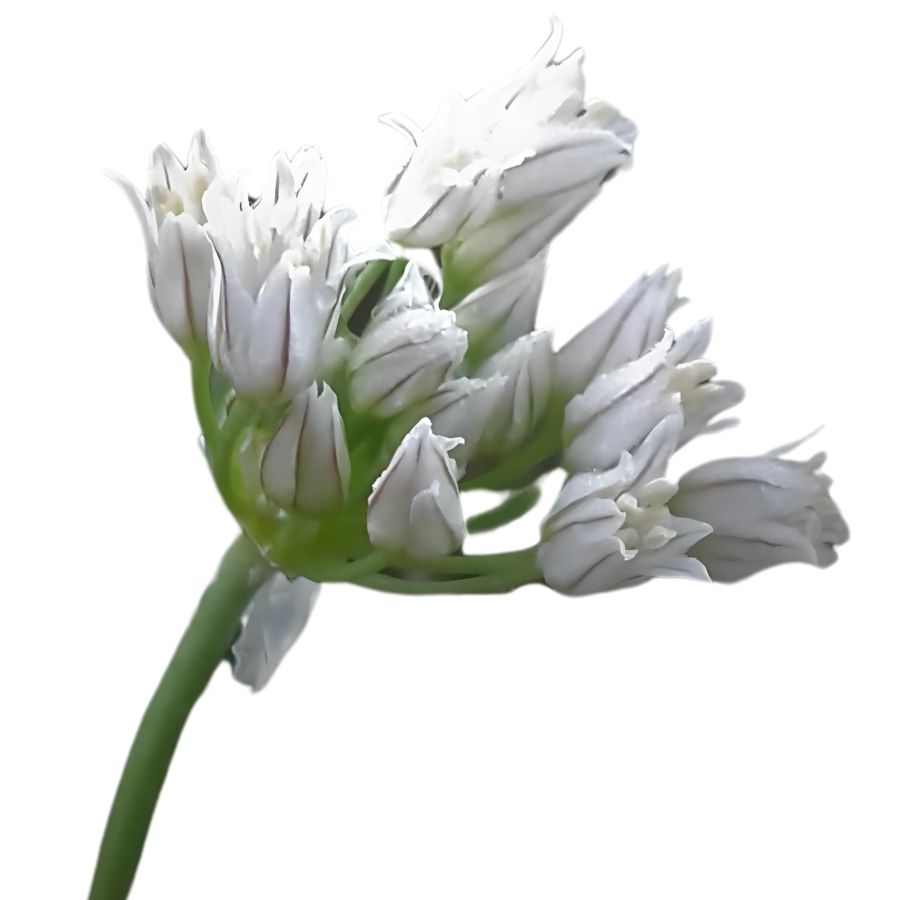
Prairie onion has tall, slender stems topped with clusters of pink to pale purple flowers and narrow, grass-like leaves. You’ll usually notice a strong onion scent when crushing any part of it, which helps confirm its identity.
The bulbs and leaves are edible and have a mild onion flavor, slightly sweet and not as sharp as store-bought varieties. You can chop the greens raw into salads or cook the bulbs in soups or stews.
It has a few lookalikes, like death camas, which lacks the onion smell and has different flower structures, so always double-check before eating. Death camas is toxic, and mistaking it for prairie onion can be dangerous.
Some people dehydrate the leaves or bulbs for storage, but it’s most commonly used fresh for its flavor. It doesn’t have much commercial value, but it’s appreciated by foragers for its taste and versatility.
Sunflower (Helianthus annuus)
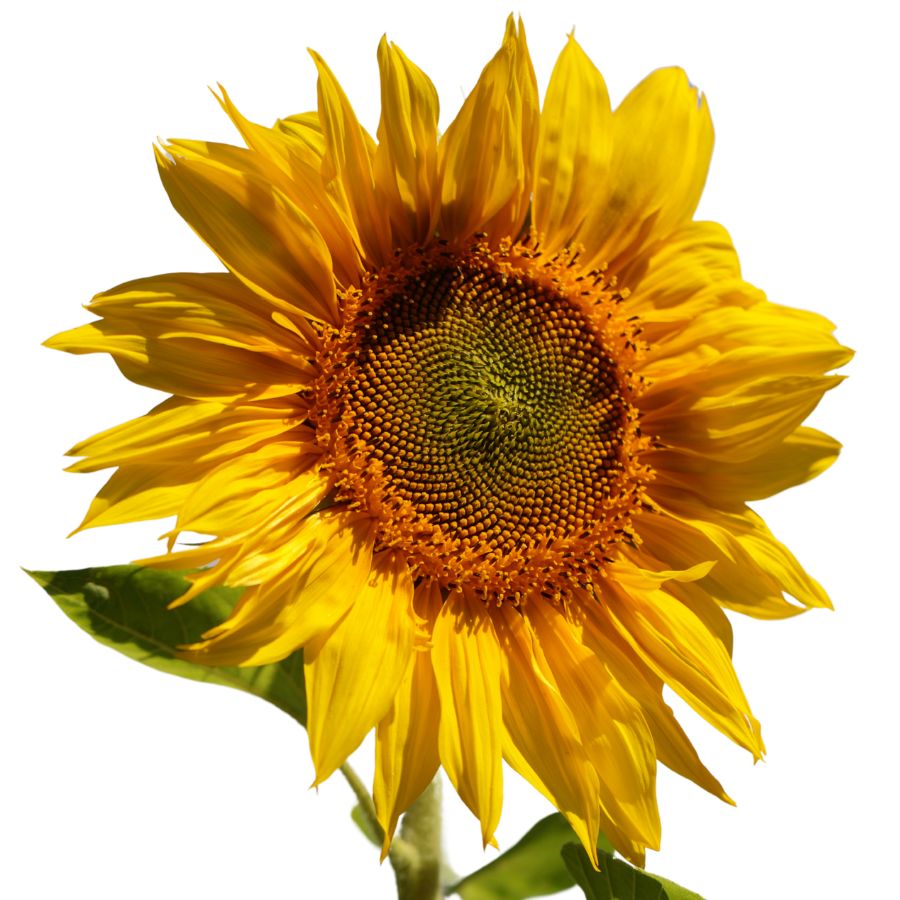
The tall, bright blooms of the sunflower aren’t just ornamental—this plant offers edible seeds with a mild, nutty flavor and a tender crunch when roasted. You can eat the seeds raw, toasted, or ground into sunflower butter, and they’re also pressed for oil that’s widely used in cooking.
What makes sunflower seeds valuable is their high oil content and protein, making them both nutritious and commercially important. The seeds can sell for a good price, especially in large-scale production or organic markets.
While the seeds and sprouts are edible, you should avoid the leaves and stalks, which are too fibrous and bitter to be useful. The seed head itself is also too tough to eat once matured.
Wild sunflower varieties do have some lookalikes, including certain types of daisies or ragweed, but only sunflowers produce large, seed-packed heads with thick, bristly centers. If you’re unsure, cracking open a flower head to check for developing seeds is a reliable indicator.
Golden Currant (Ribes aureum)
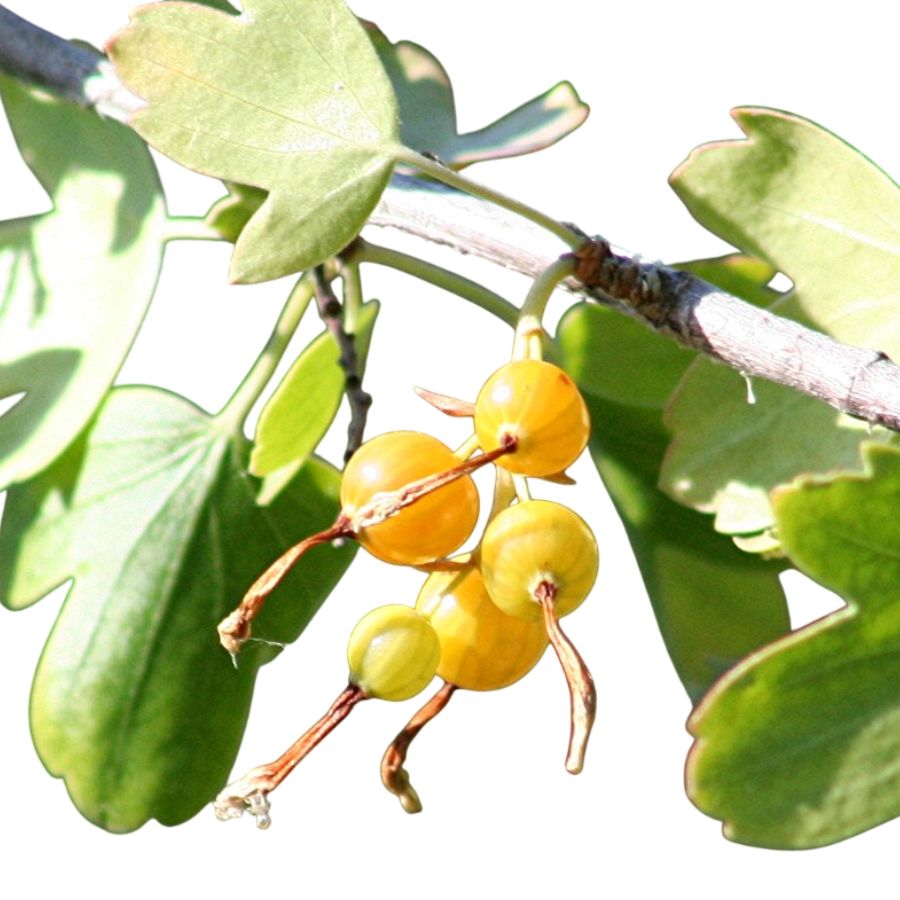
Golden currants grow on shrubs with soft lobed leaves and smooth, thornless branches, producing colorful berries that range from golden yellow to nearly purple. These berries are edible, juicy, and slightly tangy, often used in pies or turned into jam.
Only the berries are eaten, while the stems and leaves are not used for food. You can dry the fruit or freeze it, and the skin softens nicely when simmered into sauces or syrup.
They’re sometimes confused with other currants or wild gooseberries, but golden currants lack thorns and have a less aggressive flavor. If the plant has bristly stems or berries with tiny hairs, it’s probably not golden currant.
Golden currants are valuable in the kitchen for their versatility and unique taste, even though they aren’t commonly sold in stores. Their real worth lies in how many ways you can prepare and store the fruit without losing flavor.
Where to Find Valuable Forageables in the State
Some parts of the state are better than others when it comes to finding valuable wild plants and mushrooms. Here are the different places where you’re most likely to have luck:
| Plant | Locations |
| Chokecherry (Prunus virginiana) | – Curt Gowdy State Park – Bighorn National Forest (Shell Canyon area) – South Pass area in Shoshone National Forest |
| Elderberry (Sambucus nigra) | – Togwotee Pass in Bridger-Teton National Forest – Sinks Canyon State Park – Snowy Range Scenic Byway in Medicine Bow National Forest |
| Plains Pricklypear Cactus (Opuntia polyacantha) | – Thunder Basin National Grassland – Seminoe Reservoir area – Shirley Basin south of Casper |
| Milkweed (Asclepias syriaca) | – Guernsey State Park – Boysen Reservoir area – Edness K. Wilkins State Park |
| Colorado Pinyon (Pinus edulis) | – Flaming Gorge National Recreation Area – Red Canyon Rim in Ashley National Forest (WY section) – Pine Mountain area near the Utah border |
| Lamb’s Quarters (Chenopodium album) | – Bear River State Park – Green River Lakes area in Bridger-Teton National Forest – Fort Laramie National Historic Site grounds |
| Oyster Mushroom (Pleurotus ostreatus) | – Sinks Canyon State Park – Big Goose Canyon in Bighorn National Forest – Tie Hack Reservoir area in the southern Bighorns |
| Porcini (Boletus edulis) | – Togwotee Pass area in Bridger-Teton National Forest – Snowy Range in Medicine Bow National Forest – Absaroka Range near Brooks Lake |
| Curly Dock (Rumex crispus) | – Pathfinder Reservoir shoreline – Keyhole State Park – Green River near Seedskadee National Wildlife Refuge |
| Stinging Nettle (Urtica dioica) | – Popo Agie Falls Trail in Sinks Canyon – Bear Lodge Mountains near Sundance – North Fork Shoshone River corridor |
| Cow Parsnip (Heracleum maximum) | – Gros Ventre Wilderness – Wind River Range near Elkhart Park – North Tongue River headwaters |
| Jerusalem Artichoke (Helianthus tuberosus) | – Alcova Reservoir backwaters – Belle Fourche River drainage near Hulett – Powder River Basin near Sussex |
| Morel Mushroom (Morchella spp.) | – Jackson Hole area in Bridger-Teton National Forest – Lower elevations of Shoshone National Forest after burns – Bear River Range near Fossil Butte |
| Serviceberry (Amelanchier alnifolia) | – Vedauwoo Recreation Area – Bighorn Mountains near Steamboat Rock – Casper Mountain trails |
| Black Huckleberry (Vaccinium membranaceum) | – Tetons near Leigh Lake Trail – Absaroka Range in Washakie Wilderness – Snowy Range near Mirror Lake |
| Prairie Onion (Allium textile) | – Laramie Plains along the Laramie River – Ferris Mountains foothills – Boysen State Park uplands |
| Sunflower (Helianthus annuus) | – Lusk prairie roadsides – Fort Bridger area – Buffalo Bill Reservoir shoreline |
| Golden Currant (Ribes aureum) | – Curt Gowdy State Park – Greybull River bottomlands – Tongue River Canyon Trail |
When to Forage for Maximum Value
Every valuable wild plant or mushroom has its season. Here’s a look at the best times for harvest:
| Plants | Valuable Parts | Best Harvest Season |
| Chokecherry (Prunus virginiana) | Berries | August – September |
| Elderberry (Sambucus nigra) | Flowers, berries | Flowers: June – July Berries: August – September |
| Plains pricklypear cactus (Opuntia polyacantha) | Pads, fruits | Pads: May – June Fruits: August – September |
| Milkweed (Asclepias syriaca) | Shoots, flower buds, immature pods | Shoots: May Flower buds/pods: June – July |
| Colorado pinyon (Pinus edulis) | Nuts | September – October |
| Lamb’s quarters (Chenopodium album) | Leaves, young shoots, seeds | Leaves/shoots: May – July Seeds: August – September |
| Oyster mushroom (Pleurotus ostreatus) | Fruiting bodies | May – June, September – October |
| Porcini (Boletus edulis) | Fruiting bodies | July – September |
| Curly dock (Rumex crispus) | Leaves, seeds | Leaves: April – June Seeds: July – August |
| Stinging nettle (Urtica dioica) | Young leaves, shoots | April – June |
| Cow parsnip (Heracleum maximum) | Young stalks, leaf stems, flower buds | May – June |
| Jerusalem artichoke (Helianthus tuberosus) | Tubers | September – November |
| Morel mushroom (Morchella spp.) | Fruiting bodies | April – June |
| Serviceberry (Amelanchier alnifolia) | Berries | June – July |
| Black huckleberry (Vaccinium membranaceum) | Berries | August – September |
| Prairie onion (Allium textile) | Bulbs, leaves | May – July |
| Sunflower (Helianthus annuus) | Seeds | August – September |
| Golden currant (Ribes aureum) | Berries | June – July |
One Final Disclaimer
The information provided in this article is for general informational and educational purposes only. Foraging for wild plants and mushrooms involves inherent risks. Some wild plants and mushrooms are toxic and can be easily mistaken for edible varieties.
Before ingesting anything, it should be identified with 100% certainty as edible by someone qualified and experienced in mushroom and plant identification, such as a professional mycologist or an expert forager. Misidentification can lead to serious illness or death.
All mushrooms and plants have the potential to cause severe adverse reactions in certain individuals, even death. If you are consuming foraged items, it is crucial to cook them thoroughly and properly and only eat a small portion to test for personal tolerance. Some people may have allergies or sensitivities to specific mushrooms and plants, even if they are considered safe for others.
Foraged items should always be fully cooked with proper instructions to ensure they are safe to eat. Many wild mushrooms and plants contain toxins and compounds that can be harmful if ingested.

